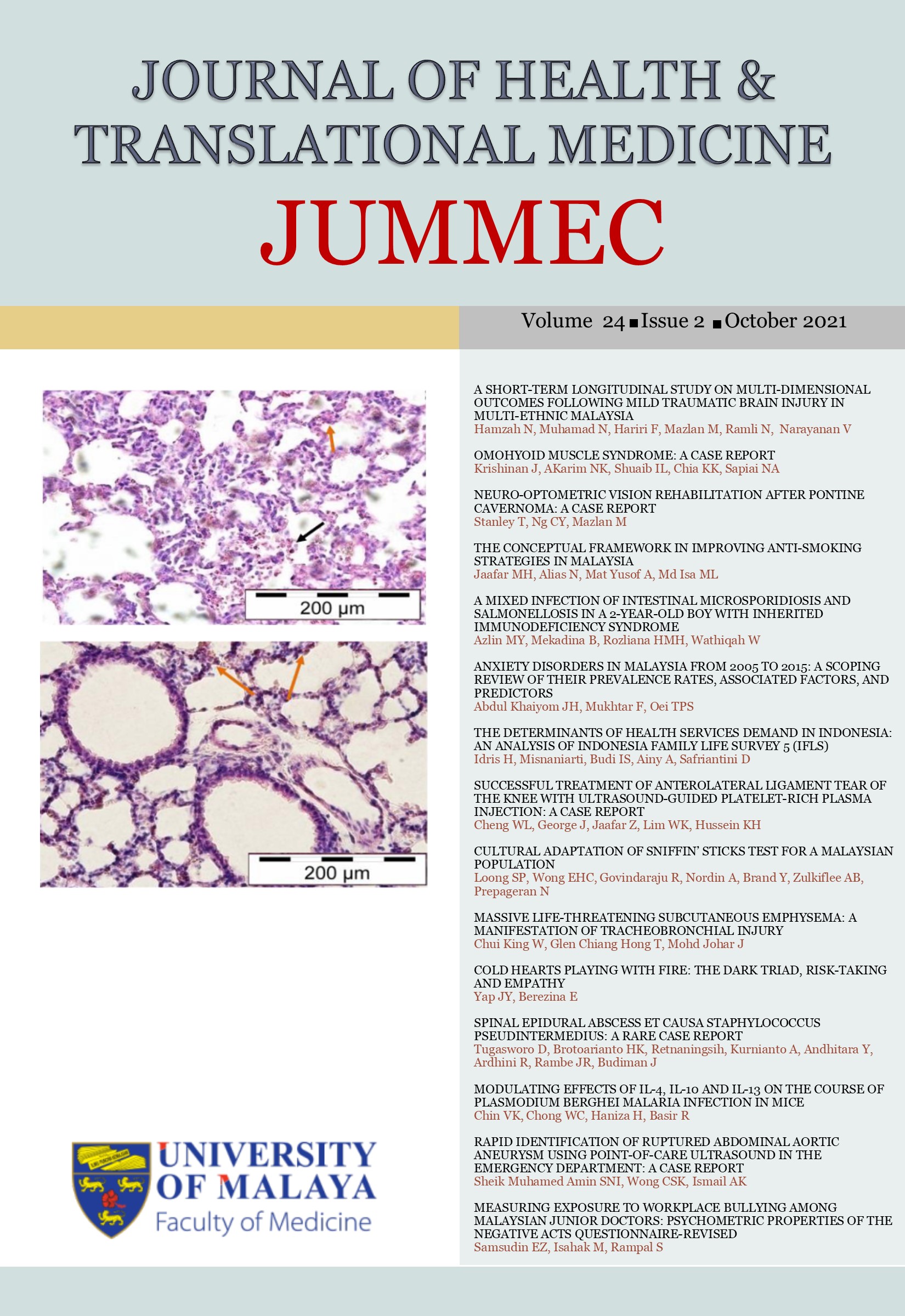MODULATING EFFECTS OF IL-4, IL-10 AND IL-13 ON THE COURSE OF PLASMODIUM BERGHEI MALARIA INFECTION IN MICE
Received 2020-01-20; Accepted 2021-09-03; Published 2021-10-07
DOI:
https://doi.org/10.22452/jummec.vol24no2.13Abstract
Background: Inflammation is a crucial process driving pathogenesis in malaria infection. The devastating effects of malaria infection has always been associated with severe inflammation whilst protective effect is linked to provocation of anti-inflammation responses. IL-4, IL-10 and IL-13 are well-established anti-inflammatory cytokines with their functional roles during malaria infection remain elusive. Therefore, this study was undertaken to study the effects of modulating IL-10, IL-4 and IL-13 on the course of malaria infection in Plasmodium berghei ANKA (PbA)-infected murine model.
Methods: Male ICR mice were randomly assigned into 5 different groupings and were infected intraperitoneal with 0.2 mL of 2 x 107 pRBCs containing P. berghei ANKA (PbA). Malaria-infected mice were treated with recombinant mouse IL-4 (rmIL-4), recombinant mouse IL-10 (rmIL-10) and recombinant mouse IL-13 (rmIL-13) for 4 consecutive days after the establishment of the infection. The survival and parasitemia levels of malarial mice and malarial mice under different treatments were monitored. Major affected organs (kidneys, lungs, brain, liver and spleen) were subjected to histopathological analysis at day-5 post infection.
Results: Our findings revealed that the overall lifespan of malarial mice treated with recombinant mouse rmIL10, rmIL-4 and rmIL-13 were prolonged, accompanied with significant reduction in malaria parasitemia levels, in particular in malarial mice receiving recombinant rmIL-10 and rmIL-13. Histopathological conditions of kidneys, lungs, brain, liver and spleen treated with recombinant mouse rmIL-10, rmIL-4 and rmIL-13 were also improved. Sequestration of parasitized red blood cells (pRBCs) and inflammation seen in major affected organs were alleviated.
Conclusion: Despite some limitations, this preliminary study demonstrated the promising therapeutic effects of IL-10 and IL-13 as adjuvant therapies in reducing severe pathological manifestations triggered by inflammation during malaria infection.
Downloads
Downloads
Published
Issue
Section
License
All authors agree that the article, if editorially accepted for publication, shall be licensed under the Creative Commons Attribution License 4.0 to allow others to freely access, copy and use research provided the author is correctly attributed, unless otherwise stated. All articles are available online without charge or other barriers to access. However, anyone wishing to reproduce large quantities of an article (250+) should inform the publisher. Any opinion expressed in the articles are those of the authors and do not reflect that of the University of Malaya, 50603 Kuala Lumpur, Malaysia.


